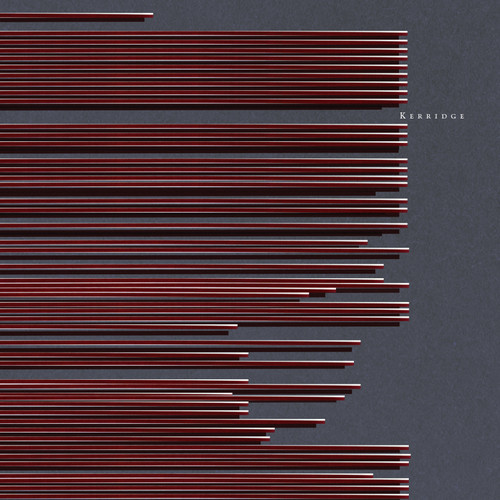Samuel Kerridge – Always Offended, Never Ashamed

As far as penetrating titles go Always Offended, Never Ashamed is up there. Whether intended or not it sounds as concise and skewering a summation of the contemporary problem as you could hope for. The affliction – of which the pithy mudslinging and rash incriminations of internet age debate are the symptoms – resembles a vampiric righteousness about any event or controversy; a draining of reality through foolhardy exaggerations, defamations, and bullshit. If materially imagined it’d be a stagnant wasteland.
The same imagery pervades the sounds united under this provocative motto on Kerridge’s follow up to A Fallen Empire, even if the thread of internet age critical analysis remains strictly limited to the connotations of its title. From the off the forecast is set, virulent and miasmic, with emittances of stygian belch and guttural pulse establishing a punishing but drawn-out and suspenseful atmosphere, like a form of long-take terror.
With ‘GOFD’ its striking how immediate the plunge is, into an entombed zone. Instead of an ingratiating introduction it feels like an abrupt entrance to a devastated scene with indecipherable but commanding announcements giving voice to a sense of imminent meltdown. Whereas AFO opened with a similar sense of weighted dread, here the execution feels severely ramped up, though just as slow-moving and precipitous. This heightened severity continues on ‘MPH’ as death-blow drubs punctuate indomitable and feral mechanics. It’s not implausible to imagine road works channelled as sonic warfare, given the force and texture.
When AO, NA was first announced the incorporation of vocals and their prominence was heralded as a somewhat surprising new-fangled element, perhaps less surprising is their execution; a diabolically screwed series of slackened, growling utterances remindful of Doctor Mix & The Remix, Prince Far-I (at least in pitch) and the demonic malignancy often evoked in the thick, throat-gristle of doom metal vocalists. They further blacken the atmosphere, like damaged transmissions in a warzone, as if a nefarious presence pronouncing cult propaganda has overtaken the tannoy.
Despite the steady tenacity, there are more accessible payoffs within all the wreckage. ‘DAYT’ reaches a climactic impasse, anticipating a formidable plummet in its final third with semi-aquatic, bludgeoning pulses and groaning metallic abrasion. Kerridge has remarked before about his objectives concerning functionality and the dancefloor, stating an impetus to create a certain intensity which suits that context. It’s difficult to dispute that this feat – notable in this instance but also latent elsewhere – isn’t achieved. Don’t get me wrong, it trudges and jars and won’t exactly light up and elate people in dark rooms, but for those willing to stay the course, it reveals and sets down an immersive atmosphere just as intoxicating as any speedier primetime headline set.
Even so reading AO, NA purely on that basis feels inadequate. There’s more to appreciate here. Although ‘TRN5’ feels just as primed for such intimate arenas, the pace slows to an even greater crawl and the sounds seem to expand into more extensively ominous creaks. The vocals match the more measured magnitude assumed, with a consistently enshrouded but more forceful stentorian resonance leaking out of the gloom. A vaguely attainable phrase about shadows falling is the only real graspable lyric; a potent indoctrination into the ferment, for its half-heard mystery.
What feels like the centrepiece of the LP – judged by its length – ‘WOSN’ enters some more reflectively downcast territory, as sustained drones evoke something momentarily frozen, mournful and cinematic, before distantly heard, almost satanic incantations are heard again, prefixing another bout of offbeat pulverising. This is the clearest indication of a simultaneous ability to conjure functional intensity and the kind of intrigue and depth in atmosphere which ensures engagement beyond more specific club confines; the convergence of the initial stages and their wilier moments and the gradual elongations of drone and noise which arise and breathe more formidably as the album progresses.
From there, ‘NCV’ and ‘WIAGW’ march into renewed decimation. ‘NCV’ announces itself with a whirling, cyclical industrial gale; barbed psychedelia and dislocating shellshock-lag like a test of endurance for the mind. Then its climactic pneumatic assault puts paid to the hearing you had left. It’s horrible but thrilling damage. ‘WIAGW’ in its kindred, concluding sense of power departs slightly from the style Kerridge carves out over the albums course, exhibiting a semblance of acid roots in its sour, serrated signals, and perhaps even indicating – in some subtle way – his exposure to the rave scene at a relatively early age. Still, even with this proximity to such territory, it’s Kerridge who adapts those stylistic echoes to his own aberrant ends.
Although the overall picture will be familiar to those initiated into Kerridge’s sound, there are fine, elevating tweaks which become more and more discernible. The design and the force with which these sounds hit seems more sophisticated and developed than in the past. If you were, at this point, forced to position Kerridge into some loose tribe of analogous contemporaries, Bronze Teeth and The Haxan Cloak would feature prominently, but even if they do speak the same language, they do so in different and distinctive ways. Not least in this instance.
With AO, NA there’s an intensity to be infected by but with it comes a stately grind to the production which conveys mindfulness amidst the heavy ruptures, buzzsaw sparks and noxiously singed surfaces brimming within. There’s little in the way of discernible lyricism, their addition seems purely tonal, yet they fortify Kerridge’s sound, littering the devastation with snarling exorcisms.
The intention couldn’t be classed as anything as obvious or trite as a dark sound for dark times. Although the sense of a climate deprived of any spells of illumination holds true and the sound might inexplicitly mirror a very modern state – that of ominousness and tumultuous confusion, as everyone wades through the mire of ugly societal ills, complex political issues, and shady institutional corruption – AO, NA deals mainly in the veiled and obstreperous, showing progressive refinement within its demolition.


















Must Reads
David Holmes – Humanity As An Act Of Resistance in three chapters
As a nation, the Irish have always had a profound relationship with the people of Palestine
Rotterdam – A City which Bounces Back
The Dutch city is in a state of constant revival
Going Remote.
Home swapping as a lifestyle choice
Trending track
Vels d’Èter
Glass Isle
Shop NowDreaming
Timothy Clerkin
Shop Now